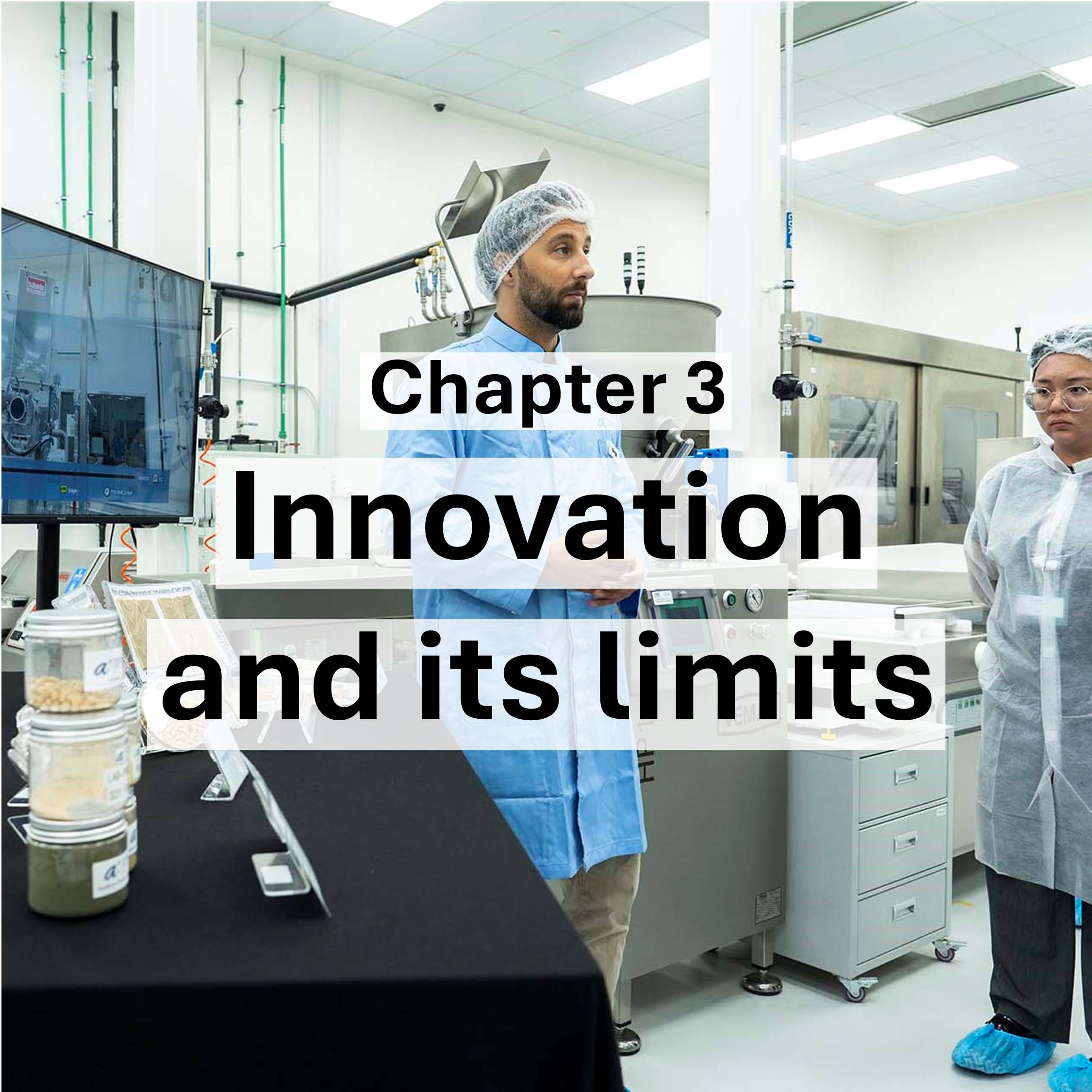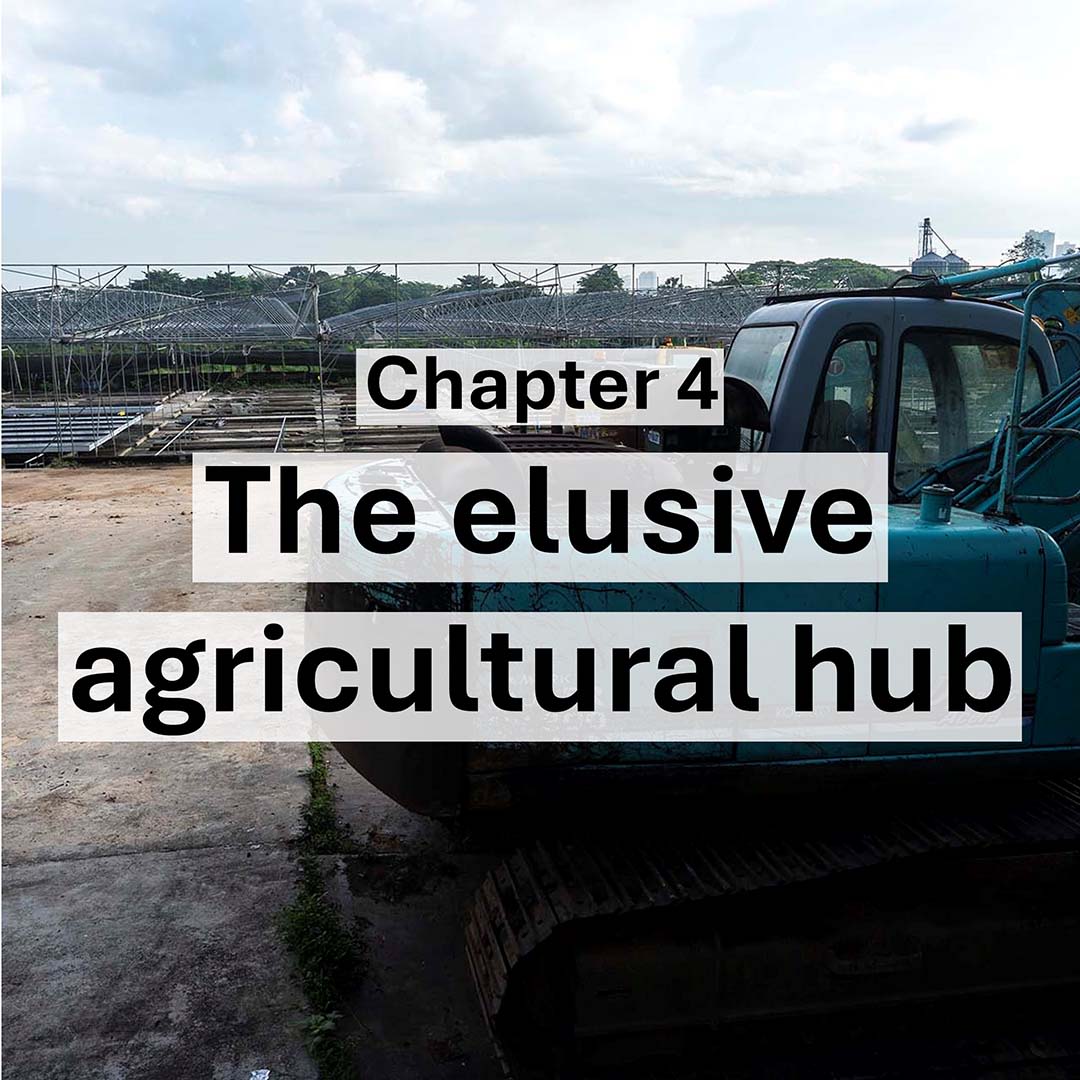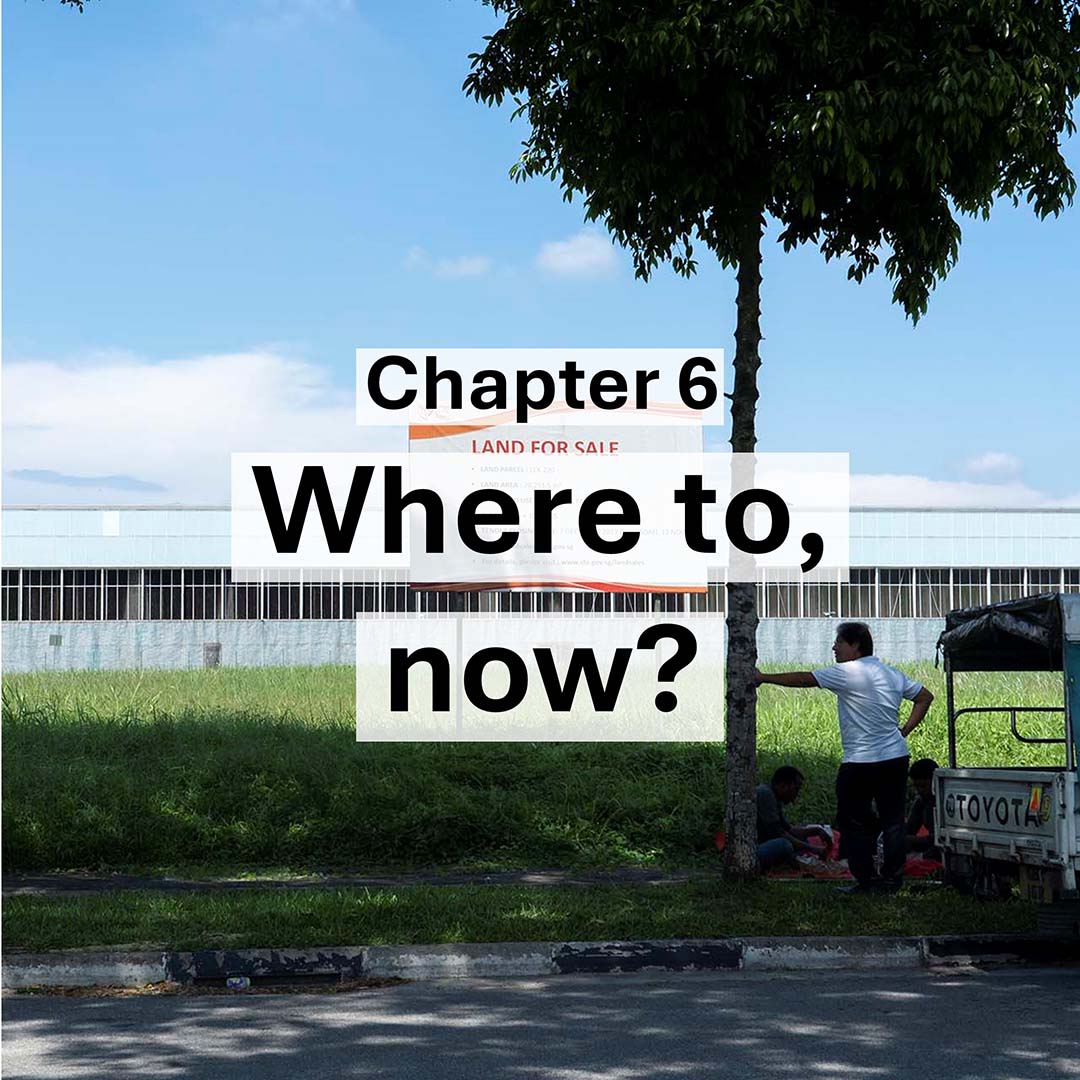Fixing the market
Can household veggies, a fish and (perhaps) a salad mix point to a working formula?
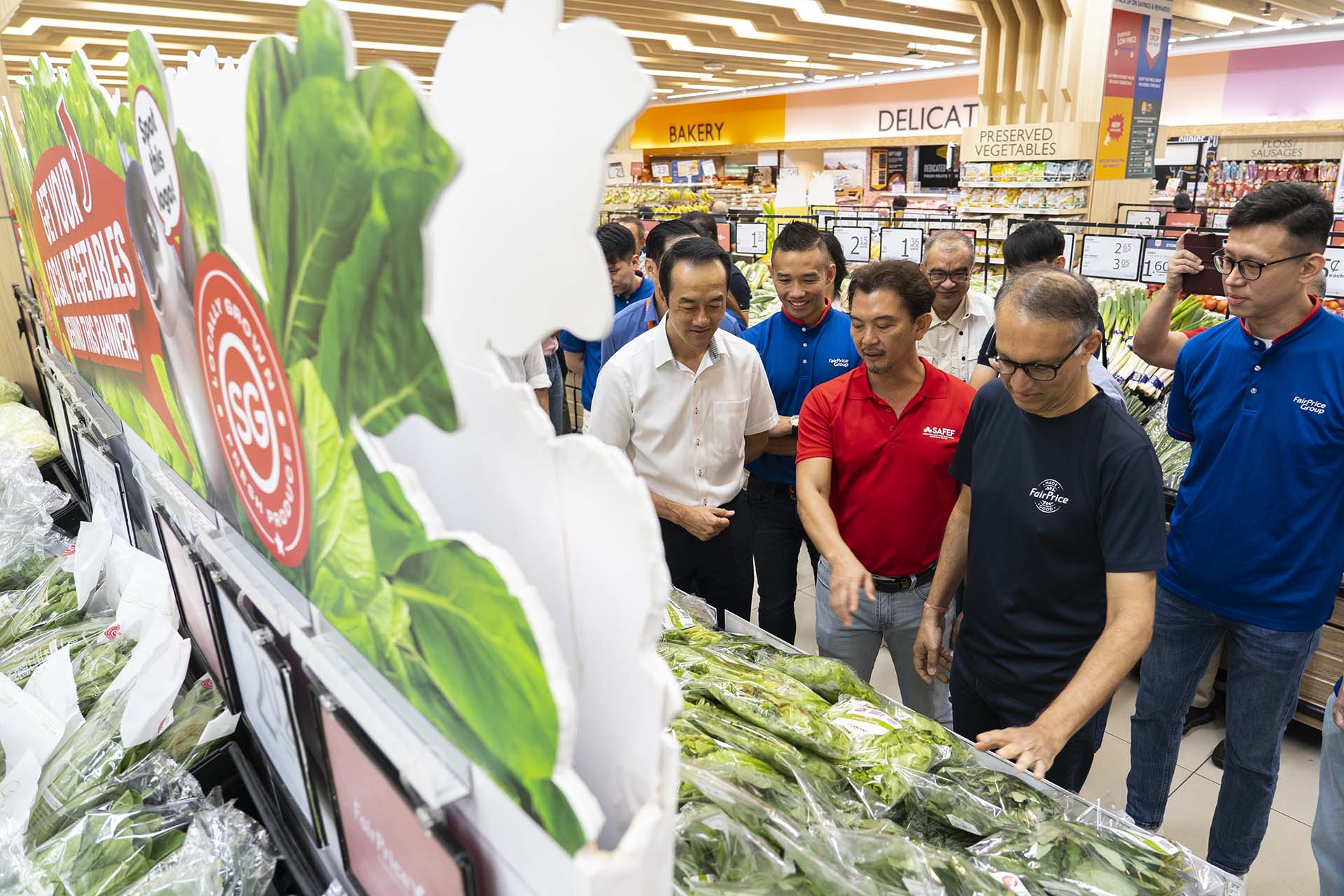
Home | 2 | 3 | 4 | Chapter 5 | 6
Beyond innovation and infrastructure, there is an increasing awareness that local market conditions have to improve.
“Farmers want volume, sustainable demand, fair trade and to be paid better,” said former Kranji Countryside Association president Kenny Eng, 49, noting that the government should do more to catalyse demand for local produce, beyond handing out money for farms to go high-tech, which does not always promise economic returns.
Rather than relying on the government to turn things around, the fourth-generation farmer, who heads up Gardenasia, the events arm of horticultural business Nyee Phoe Group, has resolved to create a business model that simplifies the way people buy local produce.
During Covid-19, his firm started a campaign – which continues to this day – that got companies and individuals to sponsor fresh local produce for underserved communities, helping to offtake local produce while complementing the less nutritious shelf-stable foods that beneficiaries typically receive. In the past two years, it has raised over S$83,000 (US$62,000) from 118 donors.
The company has also rolled out unique ready-to-eat products made from locally-grown fish and vegetables, like assam fish chowder packets and spinach gelato, to target younger consumers looking to save time on cooking.
Now, larger groups are also tinkling with the idea. This year, the Singapore Agro-Food Enterprises Federation (SAFEF) has started to convince farmers of the merits of a collective model. The idea is that the Singapore market is too saturated for farmers to be fighting over, while burning through their own cash for logistics, branding and differentiation efforts, so it may be better to work together and deliver standardised products in greater volumes. This allows small farms, which are usually ignored by larger retail chains, to participate too.
For SAFEF chief executive Ken Cheong, the effort was as much about carving out new market segments for farmers, to convince them that there is room for collaboration.
“I don't think Singaporeans go for dirt cheap produce all the time, but it must be at a reasonable price. And at a reasonable price, there must also be a good benefit for the consumer. We started with that in mind,” said Cheong.
Its first foray was a pesticide-free range of Asian greens – caixin, xiao bai cai and lettuce – at S$1.78 (US$1.30) a 200-gram pack (Another bayam offering is going at S$2.15, US$1.60). Two farms, Cropciti and Metro, are on board, while others are waiting to see if the gambit, branded “SG Farmers’ Market”, pays off.
Meanwhile, SAFEF managed to get six fish farms to rear one common tilapia species that grows well in local sea conditions. Last week, the product was launched in Singapore’s largest supermarket chain, Fairprice, at S$4.90 (US$3.60) a piece following an earlier restaurant trial.
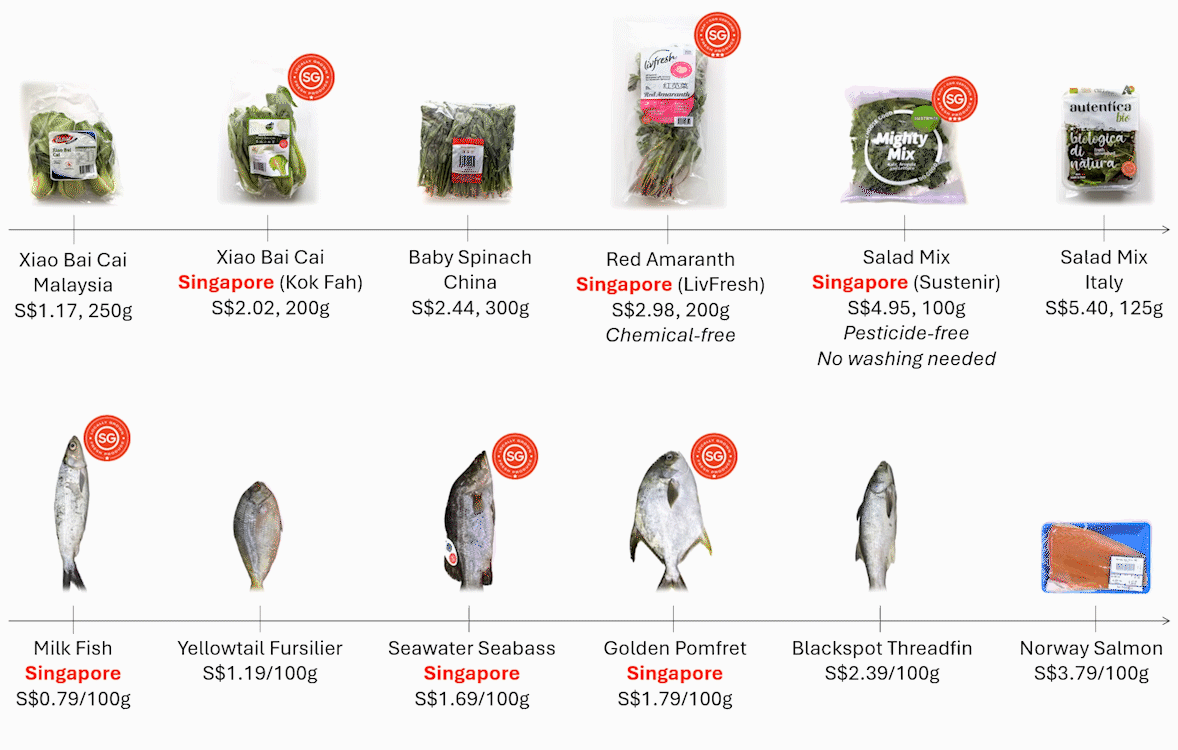
Grocery prices at a Fairprice supermarket in mid-May 2024, including the newest SG Farmers' Market products.
Grocery prices at a Fairprice supermarket in mid-May 2024, including the newest SG Farmers' Market products.
Its next attempt is to get eight growers – likely involving indoor farms – to work on a salad mix, with each establishment contributing what they grow best. Each pack could feature mizuna leaves, arugula and perhaps mini radishes.
Much of the details such as pricing and participating farms remain under discussion, but Cheong is aiming to launch the product by the next Chinese New Year – 29 January 2025.
“This will be our version of fatt choy – with eight good vegetables mixed together, at an affordable, competitive price,” he said, referring to a stew served during the festivities, with the name homonymous with “getting rich” in mandarin.
Still, not every producer is keen to join the collective. Sustenir, which has been in business for over a decade, wants to go their own way in the superfoods and wellness sector. Last month, it launched its latest “Kalming Kale” offering, packing both a healthy dose of gamma-aminobutyric acid, a natural substance said to improve sleep and reduce stress, and a price to match at S$6.50 per 100-gram pack.
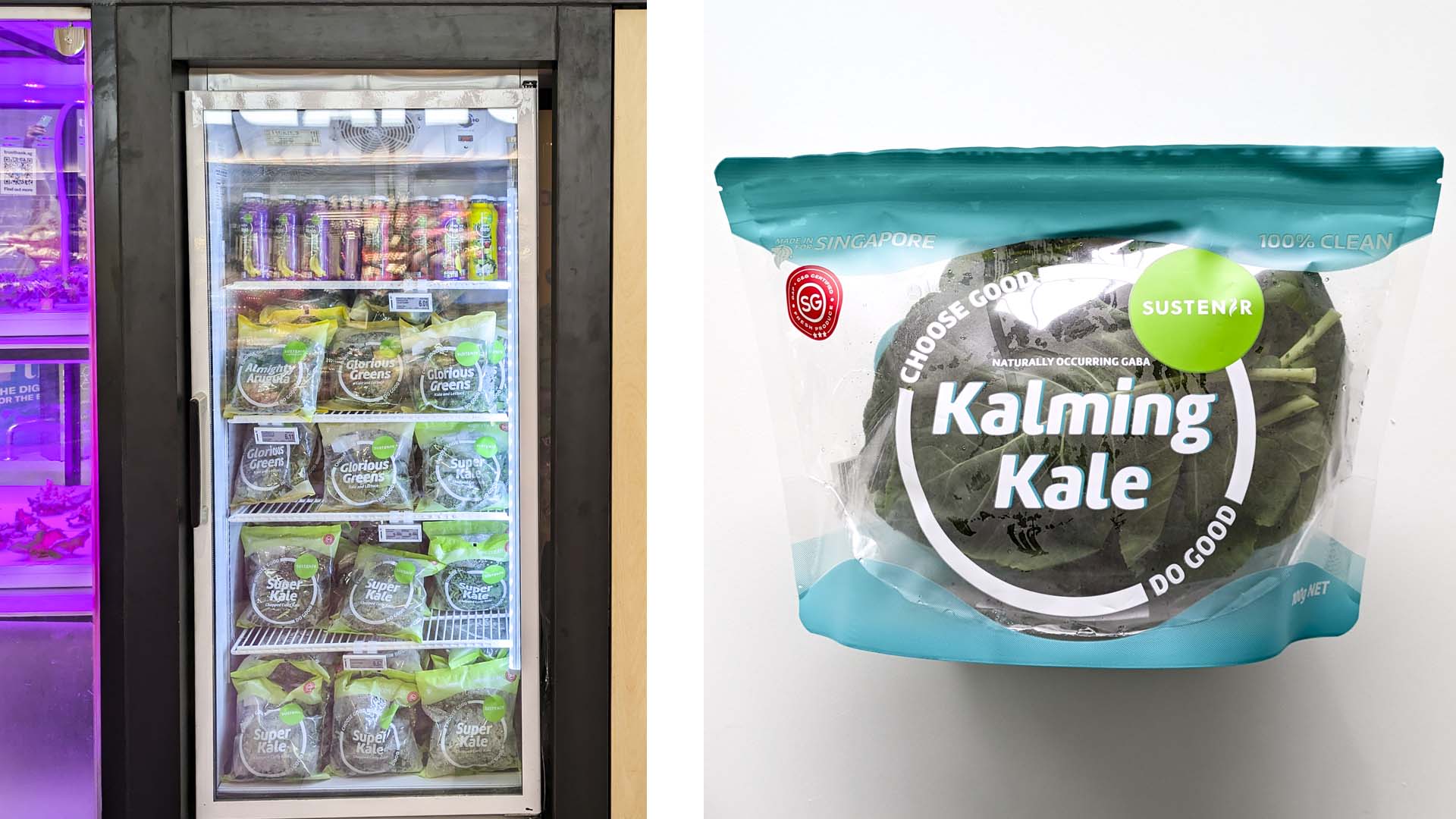
Sustenir has its own shelves in some supermarkets.
Sustenir has its own shelves in some supermarkets.
“We would pursue a brand-led strategy on our side, to build a brand that people can trust to be more nutritious and clean,” Moy said, also pointing to the company’s B Corp status, a globally-recognised benchmark for high social and environmental performance.
“That is the strategy that we have pursued, but putting on the industry hat, yes, the [demand-and-supply] aggregation probably will help raise the floor of the industry,” added Moy, who is also part of the industry committee at SAFEF.
Likewise, Growy is also pursuing its own branding, at least in the hotels and restaurants sector, with its Chef’s Farm product lineup and mobile application for direct deals.
The Dutch firm believes it has figured out a profitable formula for what to plant – 5 per cent microgreens, 2 per cent herbs, and the rest baby salad greens – and is busy looking for buyers, with an eye on expanding abroad later.
On the buyers’ end, SAFEF is targeting to get six restaurants and some wet market players on board with its aggregated produce this year. Fairprice is already on board, and there are plans to reach out to more retail chains.
Convincing restaurants could take some work, at least in the experience of Karthik Rajan, LivFresh's founder. He is looking to break into the sector as he builds up another greenhouse to fully utilise his 2-hectare plot. Eatery owners are much more cost-conscious than grocery shoppers, who have shown greater support for buying local produce, he said.
While the success of the market initiatives remain to be seen, some farmers have also been asking for firmer local offtake agreements from the government, Eco-Business understands. As it stands, agencies contracting for food services favour suppliers that use local produce, but the consideration is weighed against others such as cost and cleanliness.
Public procurement has been wielded in other countries to boost local food production. For instance, in the United Arab Emirates, which has a 50 per cent production goal by mid-century, the government is rallying both its own departments and private businesses to procure 100 per cent of their food from local sources by 2030.
But fish farm Ah Hua Kelong’s Wong Jing Kai cautions that this might trigger a price war and lead to local farms cannibalising each other. To ensure that open tenders are not tipped in the favour of larger agri-tech firms, the government will need to come up with a set of criteria that is not just based on price, he added.
Given Singapore’s challenges, some say more support, beyond market development or scale-up financing, could be needed. Professor Veera Sekaran said Singapore needs to think about how to reduce imports, to give local producers more space on supermarket shelves.
“If you say that they have to compete with market forces, and then when they don’t do well, that is their problem…then what is food security?” he said, adding that there should be subsidies for some aspects of local production – a strategy that could attract the ire of Singapore’s import partners and arguably runs counter to the city-state’s belief in open trade.
“I’m all for getting a company started using grants, but at some point, you’ve got to cut the cord. Companies need to feel market dynamics to be able to run efficiently and competitively,” Claire Pribula from The Yield Lab added.


